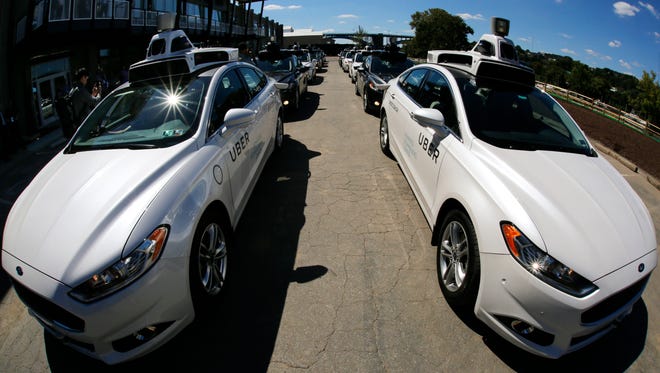Wolff: The self-driving revolution begins now

In this epoch of radical change, how would you have acted differently or considered things more deeply if you had better appreciated that disruption was coming, that it was certain and inevitable? That is, if you knew the world was being upended before, not after.
Here’s your opportunity: self-driving vehicles.
It’s an exquisite moment of being able to see the future: There are no self-driving vehicles now, at least not in everyday use, but there will be in the foreseeable future. And it is, foreseeably, a shakeup somewhere between a complex, confusing, disruptive change in basic technology and hardware (a change putting billions upon billions if not trillions of dollars in play) to a historical transformation in technological potential and human behavior not seen since the advent and worldwide adoption of the automobile itself. In other words, if you’re not devoting at least some part of your day to thinking about this, your head is in the clouds.
8 big challenges remain for self-driving car makers
You don’t have to be thinking about how to actually make a car run without a driver—and to run safely. Vast amounts of capital and expertise are already doing that, with the investment community just now starting to gear up to make its bets on winners and losers (imagine that the winners and losers will be on at least the scale of Internet winners and losers).
But the compelling thing about a change on this scale is that it demands thinking about everything else, because everything else changes, too.
One of the key areas of modern employment involves getting paid to drive a vehicle: truckers (there are 3.5 million professional truck drivers), delivery people, cab drivers and Uber drivers. It’s a question that ought to come up at Monday night’s presidential debate. Many of the people who make their living in ground transport will be out of work. So? Huh?

At the same time, the cost of moving all these goods and all this merchandise and all these people goes down. Not only does a truck not need a driver, but the truck doesn’t have to be out of commission while the driver sleeps. (Hence, go long on Amazon.)
Feds unveil plan to ensure safety of self-driving cars
There are two contradictory mega-economic forces to figure out. There is the shorter term gain from the conversion from older technology (you drive) to new technology (it drives). But there is also the longer term effect that this mean that the auto industry—still the backbone of the industrial world’s economy—will be selling few cars and trucks. Arguably, the supply of vehicles becomes highly fungible. Not dependent on a driver, a vehicle can always be in use. Everybody’s car is suddenly picking up extra cash on an Uber run.
And now cities have to be rethought. Cities are organized around how people behave in cars. If that behavior changes—if fewer cars need to park, if there is effectively no manpower limit on how many cars can cruise for a fare, if there is a different rhythm to the traffic, if nobody violates any traffic rules—then cities themselves change. Beyond the new infrastructure variables, the entire nervous system of a city shifts. Automotive anxiety, that basic fact of modernity, lifts. Or does it simply mutate in ways yet to be imagined? Does it draw people to the city, this new frictionlessness? Or does it extend the range of human mobility, pushing the bounds of the far-out exurbs with this new transportation ease.
Indeed, what is the existential effect of making obsolete a habit that is as reflexive for most adults as walking? What is the psychological consequence of removing this reason for being? I live to drive. I drive to live. But now no more. A bond between generations is cracked.

Perhaps most of all what changes is time. An ABC poll in 2005 reported that 90% of American spend at least an hour and half a day driving a car. At least! Many spend much more. In one study, an average American was found to spend 37,935 hours driving a car versus 90,360 hours working. Hence, one of the major activities of your life, gone—surely in a generation, quite possibly declining significantly within a few years. You’re free. Or, depending on how you look at it, lost. Many report that driving is the only time in a day they can be alone, the only time for forced reflection, the only time truly for themselves.
Now this time needs to be filled.
Behind the wheel of Uber's self-driving car: 'Frightening and exhilarating'
The economic and psychic opportunities for how to acquire, use and reprogram this time ought to be driving opportunists and entrepreneurs everywhere into great heights of frenzy.
In the media world, it’s a new captive audience. Or, depending on how you look at it, this heretofore captive audience is now free. Where before occupied eyes provided the main reason for radio and audio books and more recently podcasts, now there’s at least an hour and a half a day more video time per every American. A self-driving car is a new all-media capsule—text to your heart’s desire. Or it’s a bedroom. Or it’s a playroom with your children. And it’s safe! From more than 30,000 auto fatalities a year to potentially zero.
Why aren’t you thinking about this?